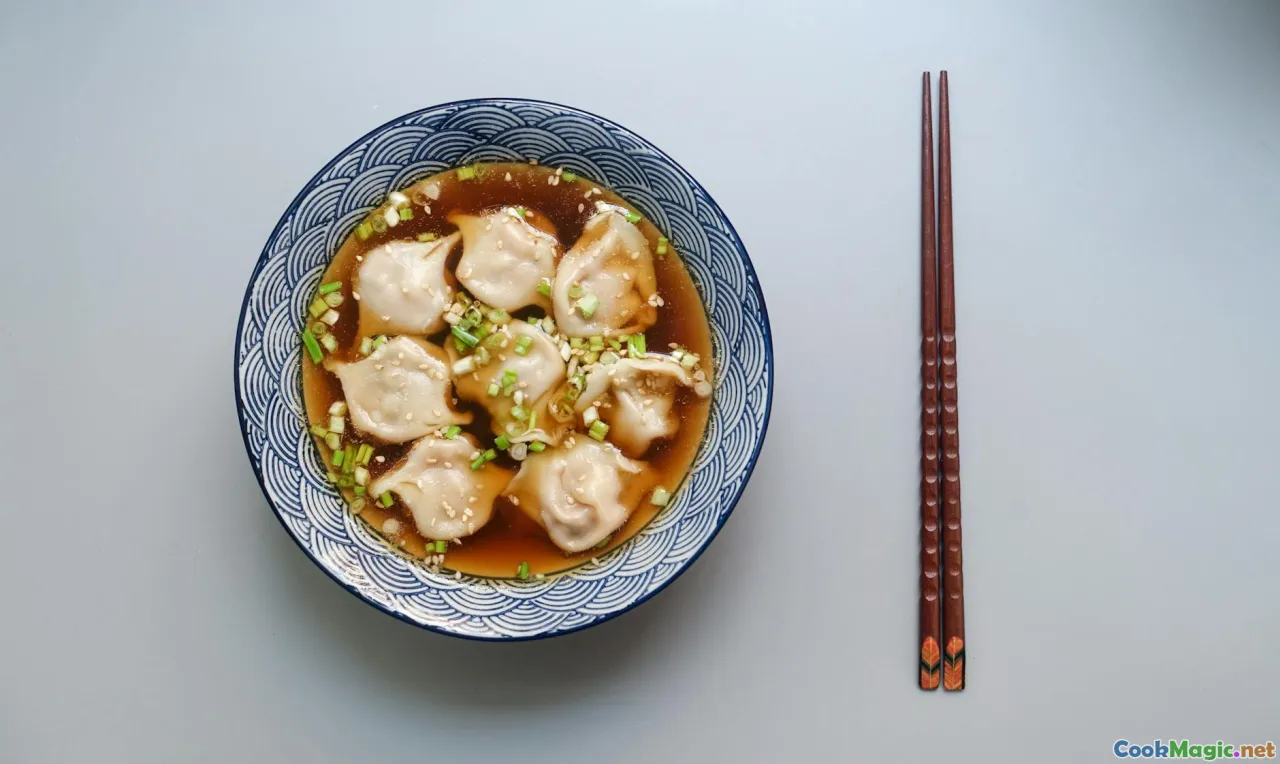How Manti Differ in Kyrgyz Culinary Tradition
8 min read Discover the unique characteristics of Kyrgyz manti, exploring their cultural significance, traditional preparation, and the sensory experience that sets them apart. June 02, 2025 15:00
How Manti Differ in Kyrgyz Culinary Tradition
Imagine a chilly spring morning in the heartland of Kyrgyzstan, where the scent of boiling broth wafts through the air, mingling with the crisp mountain breeze. A steaming plate of manti, tender and bursting with flavor, sits at the center of a bustling family table. This scene, vivid and inviting, encapsulates not just a meal but a deep-rooted cultural tradition that has been passed down through generations. But what makes Kyrgyz manti so distinctive? How do they differ from their counterparts across Central Asia?
The Cultural Significance of Manti in Kyrgyzstan
Manti is more than just a dish—it’s a symbol of hospitality, family, and communal life in Kyrgyz culture. These dumplings are often prepared during special occasions, festivals, and family gatherings, serving as a culinary expression of Kyrgyz hospitality and warmth.
In Kyrgyzstan, manti embody a blend of nomadic heritage and settled traditions. Historically, nomadic Kyrgyz tribes relied on portable, nourishing foods that could sustain them during long journeys across the rugged mountains and vast steppes. Manti, with their hearty filling and easy-to-carry shape, fit perfectly into this lifestyle.
Historical Roots and Evolution
The origins of manti trace back centuries, with influences from neighboring regions like China, Mongolia, and Persia. However, Kyrgyz manti have evolved over time, reflecting the unique landscape, climate, and cultural nuances of the Kyrgyz people.
Unlike some Central Asian variants, Kyrgyz manti are distinguished by their specific ingredients, preparation techniques, and serving customs. This evolution highlights how food adapts to environment and cultural identity.
The Unique Characteristics of Kyrgyz Manti
Ingredients and Filling
The hallmark of Kyrgyz manti lies in its filling. Traditionally, they feature a mixture of finely chopped lamb or beef, often combined with onions, fat, and sometimes pumpkin or potatoes, depending on regional availability. The meat is usually fresh, tender, and seasoned with simple salt and black pepper, allowing the natural flavors to shine.
A distinctive feature is the use of sheep fat or fat tail, a Kyrgyz delicacy, which adds richness and depth to the filling. This ingredient reflects the pastoral lifestyle and the importance of sheep herding in Kyrgyz culture.
Dough and Shaping Technique
The dough is made from flour, water, and a pinch of salt, kneaded until smooth and elastic. Unlike the thinner, more delicate dough of Russian pelmeni or Chinese jiaozi, Kyrgyz manti dough is slightly thicker, providing a satisfying bite and helping to retain the filling during steaming.
Shaping manti is an artful process. Traditionally, the dough is rolled into a large, thin circle, then cut into squares or circles, each filled with a spoonful of meat mixture. The edges are pinched together tightly, creating a pouch that withstands steaming without bursting.
Cooking Method
Kyrgyz manti are traditionally steamed over a kazan—a large, cast-iron cauldron—using a layered steaming process. The manti are placed on a bamboo or wooden steamer insert, allowing the steam to circulate evenly.
This steaming method preserves the juiciness of the filling and imparts a subtle, smoky aroma, especially when the manti are cooked over wood fires in traditional kitchens.
Serving Traditions and Variations
Traditional Presentation
Once cooked, Kyrgyz manti are typically served hot, drizzled with a dollop of sour cream or a splash of yogurt, and garnished with fresh herbs such as dill or parsley. They are accompanied by a spicy tomato sauce or a simple vinegar-based dip.
In Kyrgyz households, manti are often served family-style, encouraging a sense of togetherness and shared enjoyment. The steaming plate of manti is a centerpiece, around which stories and laughter flow.
Regional Variations
While the core elements remain consistent, regional variations exist. In the southern parts of Kyrgyzstan, manti may include pumpkin or squash in the filling, adding sweetness and color. In the eastern regions, lamb is preferred, sometimes mixed with kidney or liver for a richer flavor.
Some communities also have a tradition of stuffing manti with a mixture of meat and rice, blending different textures and flavors.
Personal Reflection and Cultural Significance
Having traveled across Kyrgyzstan, I’ve witnessed how manti serve as a bridge between past and present. I recall visiting a mountain village where an elderly woman, her hands expertly shaping the dough, shared stories of her ancestors, emphasizing how each fold and pinch carries centuries of tradition.
The aroma of freshly steamed manti, mingled with the scent of birch firewood, evokes a profound sense of connection—to the land, the people, and the history embedded in every bite. These dumplings are more than sustenance; they are a living testament to Kyrgyz resilience and ingenuity.
The Future of Kyrgyz Manti
As Kyrgyz cuisine gains increasing recognition globally, traditional manti face both challenges and opportunities. Modern cooking appliances and changing lifestyles influence how they are prepared and enjoyed.
However, the core values—community, tradition, and authentic flavors—remain steadfast. Chefs and home cooks alike are working to preserve these techniques, ensuring that future generations can savor the genuine Kyrgyz manti.
Conclusion
Kyrgyz manti are a culinary embodiment of the country’s nomadic spirit, rich history, and communal values. Their unique ingredients, meticulous shaping, and steaming method create a sensory experience that is both comforting and invigorating. More than just a dish, they are a cultural treasure that continues to nourish body and soul, connecting Kyrgyz people across generations.
So next time you indulge in manti, think of the centuries of tradition, the mountain air, and the stories woven into each fold—an edible testament to Kyrgyzstan’s enduring spirit.









